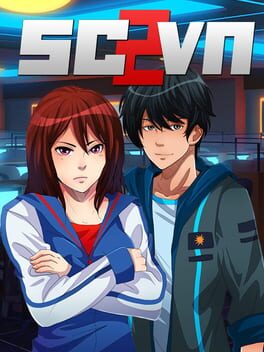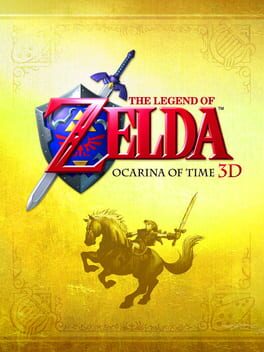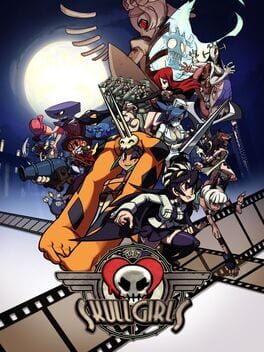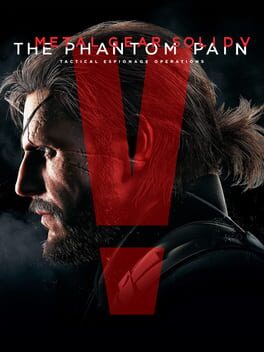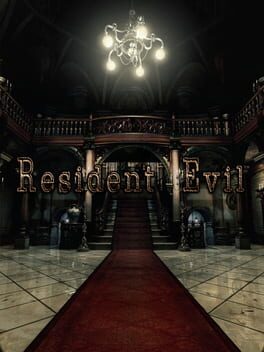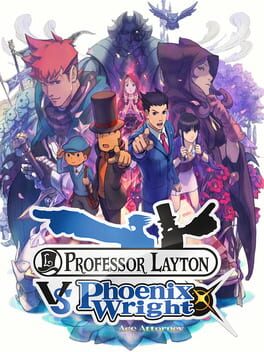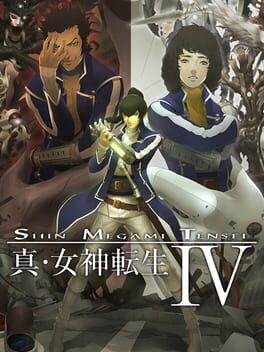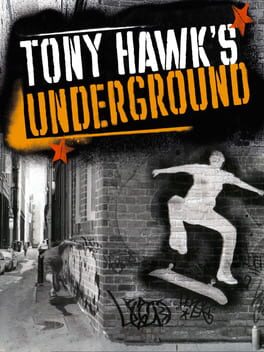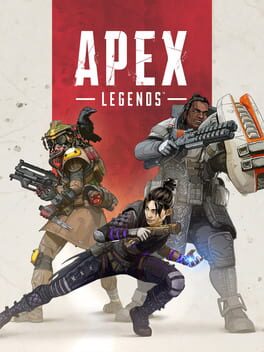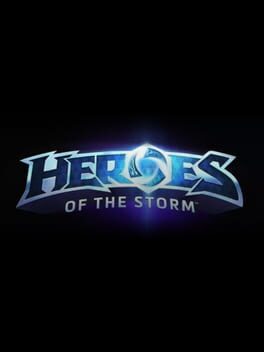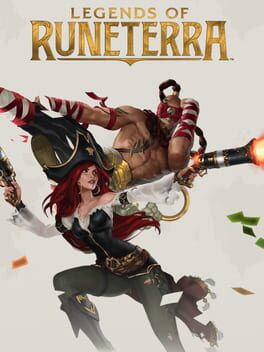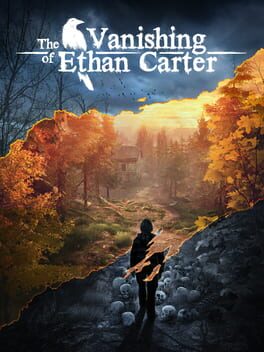synthezoid
Either I'm bad, or some of the puzzles in this game are a bit obtuse. Maybe both.
The gameplay just isn't as fun as it was in the 90s. The combat is rough, which is appropriate, as it's essentially a prototype for every 3D action-adventure to come after it. Still, it's hard to get excited by any of the encounters this game puts in front of you. Many fights boil down to either mindlessly swinging at an enemy or patiently waiting for them to expose their weak spot. Challenges that involve platforming or timing are as much a test of your ability to wrangle the camera as they are of your skill. The puzzles are largely functional, but sometimes feel a bit clunky to engage with. Case in point: I almost got stuck in Ganon's castle looking for a way to set something on fire. I tried shooting an arrow through a torch, but it didn't work. After running around hunting for another option, disappointed that a cool, creative solution didn't work, I eventually looked it up, and a guide suggested using fire arrows (what? I never got those--apparently they're tucked away around the lake somewhere, but I never found much reason to go back there)--or shooting an arrow through that same torch. I had solved the puzzle; it just didn't work the first god-knows-how-many-times I tried, so I went back to painstakingly lining up shots until I eventually got it. At least the 3DS version of this game offers gyro controls to make aiming more manageable, but in this case, it just wasn't clear how my aim was off to begin with. The N64 version of this and Majora's Mask have some of the twitchiest, roughest first-person aiming I've ever used--understandable for such an innovative game, but that doesn't make it any more fun to deal with.
To me, this moment is a microcosm of my whole experience with Ocarina of Time; clever ideas meet clunky execution. Interesting puzzles are let down by "wait, am I doing this right" moments. Exciting bosses give way to combat mechanics that just aren't as fast or responsive as you really want them to be. The overworld strikes an impressive balance between open and dense, but exploring it doesn't always feel as rewarding as it could. The game's world is unforgettable, but the way it signals the right sequence of actions to progress the main quest oscillates between that of a parent holding your hand and that of Bilbo Baggins asking Gollum what's in his pocket. The outline of a great game is here, but it's colored in with the details of a decent one. Plenty of great games have weaker elements, and all masterpieces show their age in one way or another, but for me, Ocarina of Time's worst parts were never unobtrusive enough to be totally subsumed by the good bits.
Still, the atmosphere is undeniably legendary for a reason, and the sound design is some of the best ever. The visuals, even in the N64 version, exude style, making them far more timeless than they have any right to be. The story is so iconic that it feels generic, but all of us who played this game as kids, or even just watched someone else play it, remember it vividly for a reason. Credit where credit is due: Ocarina is very cool, and a little bit fun.
The gameplay just isn't as fun as it was in the 90s. The combat is rough, which is appropriate, as it's essentially a prototype for every 3D action-adventure to come after it. Still, it's hard to get excited by any of the encounters this game puts in front of you. Many fights boil down to either mindlessly swinging at an enemy or patiently waiting for them to expose their weak spot. Challenges that involve platforming or timing are as much a test of your ability to wrangle the camera as they are of your skill. The puzzles are largely functional, but sometimes feel a bit clunky to engage with. Case in point: I almost got stuck in Ganon's castle looking for a way to set something on fire. I tried shooting an arrow through a torch, but it didn't work. After running around hunting for another option, disappointed that a cool, creative solution didn't work, I eventually looked it up, and a guide suggested using fire arrows (what? I never got those--apparently they're tucked away around the lake somewhere, but I never found much reason to go back there)--or shooting an arrow through that same torch. I had solved the puzzle; it just didn't work the first god-knows-how-many-times I tried, so I went back to painstakingly lining up shots until I eventually got it. At least the 3DS version of this game offers gyro controls to make aiming more manageable, but in this case, it just wasn't clear how my aim was off to begin with. The N64 version of this and Majora's Mask have some of the twitchiest, roughest first-person aiming I've ever used--understandable for such an innovative game, but that doesn't make it any more fun to deal with.
To me, this moment is a microcosm of my whole experience with Ocarina of Time; clever ideas meet clunky execution. Interesting puzzles are let down by "wait, am I doing this right" moments. Exciting bosses give way to combat mechanics that just aren't as fast or responsive as you really want them to be. The overworld strikes an impressive balance between open and dense, but exploring it doesn't always feel as rewarding as it could. The game's world is unforgettable, but the way it signals the right sequence of actions to progress the main quest oscillates between that of a parent holding your hand and that of Bilbo Baggins asking Gollum what's in his pocket. The outline of a great game is here, but it's colored in with the details of a decent one. Plenty of great games have weaker elements, and all masterpieces show their age in one way or another, but for me, Ocarina of Time's worst parts were never unobtrusive enough to be totally subsumed by the good bits.
Still, the atmosphere is undeniably legendary for a reason, and the sound design is some of the best ever. The visuals, even in the N64 version, exude style, making them far more timeless than they have any right to be. The story is so iconic that it feels generic, but all of us who played this game as kids, or even just watched someone else play it, remember it vividly for a reason. Credit where credit is due: Ocarina is very cool, and a little bit fun.
2012
1998
2014
This review contains spoilers
Incredible game. I will say, though, that it has a learning curve. If "normal mode" (the 'mountain climb' difficulty) had a bit more time to ease you into the mechanics of dodging, killing, and negotiating the mansion's zombies, it'd be perfect. As it is, I switched to the middle difficulty--which turned out to be easy mode--after some rough deaths on normal in the hopes of getting acclimated. By the end, though, I was overflowing on resources and the bosses were mostly trivial. If I could've had something in between the two difficulties, that might've been ideal, or something which started easier but ramped harder by the end.
Also, this is NOT a game you should stop playing in the hopes of picking it up weeks, months, or years later. There are too many interlocking puzzle pieces to keep track of for that to be anything less than annoying. However, this is the same reason it's so engaging to binge-play that it only took me a few sessions. If, however, there were some way to mark or write on the map (i.e. "shield lock here," "clock puzzle," "dogs!") that would be a non-issue (and would make the backtracking a bit less tedious if you have a small working memory).
I put those points first because other than that, it's damn near flawless. The puzzles are almost never too tough or obtuse, the combat is simple but works, and the scares are there in spades. It builds them up, too. It doesn't seem too bad at first once you learn how to handle a zombie, but it constantly throws something new at you and finds ways to twist the mansion against you. And it only goes up from there, saving some of the scariest enemies and most thrilling moments for the final act. The main downside is that the boss fights aren't too challenging or interesting--assuming you saved your most powerful ammo for them--but that's a necessary consequence of the clunkier control scheme than modern games. The more awkward combat mechanics mean that a boss can't require precise aiming or navigation, just some basic dodging and the occasional puzzle solving, but that's fine. It's for this reason that Plant 42 is one of the standouts--you only need to leave and solve a puzzle to beat it instead of spamming grenades at it. The character of the bosses goes a long way, at least: Yawn's jump scare for the second fight, Lisa Trevor's stalking, and Neptune's... sharkiness. Still, the climactic fights don't stand out the way RE2make or RE4's more action-driven battles do, even if they have just as much personality.
These scares are all served by its atmosphere, with compelling sound design that always seems to know how to manage music, ambience, and volume to great effect. But the standout here are the pre-rendered backgrounds, which have a beautiful yet ethereal quality to them that only serves to make the mansion feel more like a waking nightmare. They would be nothing, however, without the fixed camera angles which are aggressively cinematic--even more so than most games of this type. Only on rare occasions does this make you accidentally run into a zombie out of frame, but that's an entirely worthwhile sacrifice. Few other games commit so hard to the control of tone and information that the fixed camera provides, and none do it so well.
Narratively, it's no Silent Hill 2, but it balances its intense spooks with an absolute charmer of a silly B-movie script (with some genuinely effective plot threads sewn into the background through lore items scattered about the world).
Now let me entertain a theory. Resident Evil is basically the Evil Dead of video games: it starts out as a serious and deadly effective, yet campy, horror dream (Evil Dead 1=Resident Evil 1-3), but as the series progresses, it gets more self-aware, more campy, and more absurd before turning into outright action (Evil Dead 2/Army of Darkness=Resident Evil 4-6). Somewhere along the way, there's a serious but seriously overlooked attempt to call back to the series' roots that no one talks about anymore (Evil Dead 2013=Resident Evil Revelations). Eventually, years down the line, they return to form with a fan-pleaser that both moves the series forward and calls back to what everyone loved about it. (Ash vs. Evil Dead=Resident Evil 7).
Wait, what was I saying?
Oh, yeah.
Masterpiece.
Also, this is NOT a game you should stop playing in the hopes of picking it up weeks, months, or years later. There are too many interlocking puzzle pieces to keep track of for that to be anything less than annoying. However, this is the same reason it's so engaging to binge-play that it only took me a few sessions. If, however, there were some way to mark or write on the map (i.e. "shield lock here," "clock puzzle," "dogs!") that would be a non-issue (and would make the backtracking a bit less tedious if you have a small working memory).
I put those points first because other than that, it's damn near flawless. The puzzles are almost never too tough or obtuse, the combat is simple but works, and the scares are there in spades. It builds them up, too. It doesn't seem too bad at first once you learn how to handle a zombie, but it constantly throws something new at you and finds ways to twist the mansion against you. And it only goes up from there, saving some of the scariest enemies and most thrilling moments for the final act. The main downside is that the boss fights aren't too challenging or interesting--assuming you saved your most powerful ammo for them--but that's a necessary consequence of the clunkier control scheme than modern games. The more awkward combat mechanics mean that a boss can't require precise aiming or navigation, just some basic dodging and the occasional puzzle solving, but that's fine. It's for this reason that Plant 42 is one of the standouts--you only need to leave and solve a puzzle to beat it instead of spamming grenades at it. The character of the bosses goes a long way, at least: Yawn's jump scare for the second fight, Lisa Trevor's stalking, and Neptune's... sharkiness. Still, the climactic fights don't stand out the way RE2make or RE4's more action-driven battles do, even if they have just as much personality.
These scares are all served by its atmosphere, with compelling sound design that always seems to know how to manage music, ambience, and volume to great effect. But the standout here are the pre-rendered backgrounds, which have a beautiful yet ethereal quality to them that only serves to make the mansion feel more like a waking nightmare. They would be nothing, however, without the fixed camera angles which are aggressively cinematic--even more so than most games of this type. Only on rare occasions does this make you accidentally run into a zombie out of frame, but that's an entirely worthwhile sacrifice. Few other games commit so hard to the control of tone and information that the fixed camera provides, and none do it so well.
Narratively, it's no Silent Hill 2, but it balances its intense spooks with an absolute charmer of a silly B-movie script (with some genuinely effective plot threads sewn into the background through lore items scattered about the world).
Now let me entertain a theory. Resident Evil is basically the Evil Dead of video games: it starts out as a serious and deadly effective, yet campy, horror dream (Evil Dead 1=Resident Evil 1-3), but as the series progresses, it gets more self-aware, more campy, and more absurd before turning into outright action (Evil Dead 2/Army of Darkness=Resident Evil 4-6). Somewhere along the way, there's a serious but seriously overlooked attempt to call back to the series' roots that no one talks about anymore (Evil Dead 2013=Resident Evil Revelations). Eventually, years down the line, they return to form with a fan-pleaser that both moves the series forward and calls back to what everyone loved about it. (Ash vs. Evil Dead=Resident Evil 7).
Wait, what was I saying?
Oh, yeah.
Masterpiece.
2016
Kind of like Dark Souls 1 with that game's rough edges smoothed over. In the process, it also smooths over the looping, interconnected world for something a bit more linear (but branching), but who cares? It's the most polished--and the most fun--Dark Souls has ever been, and it offers combat that is faster, more fluid, and more exciting to boot.
Dark Souls III is as DARK and HARD and GROSS and GRIM and DIM as ever, but also unapologetically beautiful. The first time I stepped into Irythill, I got a little emotional. The first time I got lost in the marshy swamps of Farron Keep, I felt a manic excitement more intense than anything else Dark Souls had thrown at me prior. This game is Dark Souls at its most refined, devoid of all the halting friction that marks DS1's low points. Maybe it's not fair to write this review in such a comparative tone, but the fact is that Dark Souls 1 is already one of the most singular and impressive games I've ever played... and this one is better. I feel that's more enlightening than any futile attempt at an independent, objective look at a game that could never exist in a vacuum anyway.
Dark Souls III is as DARK and HARD and GROSS and GRIM and DIM as ever, but also unapologetically beautiful. The first time I stepped into Irythill, I got a little emotional. The first time I got lost in the marshy swamps of Farron Keep, I felt a manic excitement more intense than anything else Dark Souls had thrown at me prior. This game is Dark Souls at its most refined, devoid of all the halting friction that marks DS1's low points. Maybe it's not fair to write this review in such a comparative tone, but the fact is that Dark Souls 1 is already one of the most singular and impressive games I've ever played... and this one is better. I feel that's more enlightening than any futile attempt at an independent, objective look at a game that could never exist in a vacuum anyway.
An engrossing cyber-fantasy-apocalypse narrative with buttery smooth turn-based gameplay, (SMT, as always, remains one of the most fun turn-based JRPGs out there), but I initially fucked up on getting the ending I actually wanted. This led to me just going for the Nihilist ending and dropping it for years. I did have an earlier save that was far enough back to secure the Neutral ending with some different choices, but I didn't feel like replaying those hours of content for a long time. When I finally committed to getting a proper ending, during boss fights or setpiece story moments, I was regularly reminded of how successful this game is at delivering both fun gameplay and powerful vibes (even if some of the characterizations get a bit cartoonish, undermining the plot's heavy moral themes; the very concept of "alignment reps" seems antithetical to making believable, fleshed-out, independently-motivated characters). The atmosphere of its decrepit, demonic world is sold almost entirely on its presentation. The character and monster designs look great, and the visual style of the world is appropriately gritty and mishmashed. But the real standout is its soundtrack, which punches so far above its weight class, it's hard to believe it came from some niche 3DS game that you can't even buy anymore.
Those mostly-good feelings were somewhat tarnished by how getting the Neutral ending nearly demands using a guide and feels like doing taxes. I managed with some trial and error and some foreknowledge about how alignment is tracked, but man. I kind of wish I had just committed to Law or Chaos instead, but the story just didn't give me enough to chew on with either to feel satisfied locking into them. On top of the Neutral ending being weirdly tough to unlock, it interrupts your momentum in the home stretch to make you to perform a bunch of repetitive sidequests. Adding insult to injury, the game offers no signposting as to which ones you actually need to do or where to get them (thanks Gamefaqs), so the pacing takes a nosedive here.
And speaking of signposting, navigating Tokyo without an eidetic memory is a slog. While most of the "dungeons" in this game, a Shin Megami Tensei mainstay, are drastically reduced in scale, complexity, and variety compared to earlier entries, the overworld itself feels like its own inescapable megadungeon. The map has essentially no labeling, and you can't move the camera to see regions of the map beyond the one you're in. There is a fast travel system, but it's a menu with no visual indication of where each terminal will spit you out, so it's only useful if you Google a map or have the geography of Tokyo memorized. Roads might look like they connect at a glance, but actually have indistinguishable grey rubble blocking the most convenient path. Buildings which connect regions of the overworld aren't always obvious. I don't always mind getting lost every now and then in a game, but the process of getting lost needs to be fun. SMT IV is not a Metroidvania, and its overworld design is nowhere near as distinctive, memorable, or well-designed as a good one. The aforementioned final stretch of the Neutral path, which involves substantial time spent running between previously-explored areas to perform menial labor, is made ten times more sluggish by this labyrinthine map combined with constant encounters against low level enemies. They're not a threat most of the time; it just takes far too long to fast-forward through inconsequential fights to not feel like padding. There is a demon ability which lets you one-shot lower-level fights without entering combat, but it requires a conscious effort to fuse or keep around a demon who has it, on top of manually applying it any time you need it. The inconvenience of this convenience feature counters much of the utility it might have, so I rarely bothered.
Or, if things do get tough again, you'll have to sit through an interminable dialogue with Charon just to get back to playing again. Every time you die. It's so long that, if you have a recent save and don't feel like spending Macca or 3DS Play Coins (yeah), it's faster to just close the game and relaunch it. I actually quite like that the game can be challenging (even if this mainly only applies near the beginning and end of the story). I like that boss fights encourage you to experiment to figure out their weaknesses and attack patterns (even if the press-turn and smirk systems punish this experimentation sometimes, making the optimal strategy involve testing a boss's weaknesses before you inevitably die and reload to actually take advantage of them). I love that you have to really understand and interact with the game's mechanics to get an edge, lest you be punished for stumbling into an enemy's resistances or end up unprepared to handle their debuffs. But it's absolutely mind-boggling that a game which needs you to be okay with dying periodically--or even repeatedly against the hardest enemies--makes something as basic as loading your last save take ages.
I am obsessed with player agency and getting to influence a narrative with my choices--so naturally, I love RPGs. Of course, JRPGs that do this are a rare treat. Still, SMT IV runs into an issue that I've seen in some other JRPGs with choice: it's just not as deep as I would like. The aforementioned multiple (non-Nihilist) endings, while a cool concept, ultimately boil down to a math problem--did you make more Law or Chaos choices, or did you hit the sweet spot for Neutral?--without much in the way of alternate quest resolution or branching paths. There is no causal link between any individual choice and the outcome you get at the end of the game, which makes the consequences of each different ending feel a bit disconnected and arbitrary. This isn't objectively horrible (there are plenty of completely linear games that still end up being great, and SMT IV is more liberating than that), so I won't judge the game for not meeting benchmarks it never aimed for. Still, I can't help but feel like an SMT game with CRPG narrative sensibilities would be the coolest game in the world. (Tangent: I played Pillars of Eternity 2 recently, and it would make for a great SMT game if it were set in apocalyptic Tokyo instead of fantasy-pirate-land--that game's themes, especially regarding the role of the divine in human governance, mirror SMT's law-neutral-chaos divide shockingly well.) Maybe SMT IV would be better if it were about half as long but twice as reactive to your choices. That would certainly alleviate most of my padding and pacing concerns.
All in all, SMT IV is a decidedly not-perfect greatest hits album of themes, demons, mechanics, and plot elements from previous mainline SMT games. The new stuff--like the soundtrack, visuals, quality-of-life adjustments, and main characters, are all great, but also feel like they could have shined more unshackled from the genre and formula expectations of a decades-old RPG franchise. Still, for me, it was a slick and strong introduction to what makes SMT tick. It might not be the best JRPG in the world, but it's certainly one of the coolest.
Those mostly-good feelings were somewhat tarnished by how getting the Neutral ending nearly demands using a guide and feels like doing taxes. I managed with some trial and error and some foreknowledge about how alignment is tracked, but man. I kind of wish I had just committed to Law or Chaos instead, but the story just didn't give me enough to chew on with either to feel satisfied locking into them. On top of the Neutral ending being weirdly tough to unlock, it interrupts your momentum in the home stretch to make you to perform a bunch of repetitive sidequests. Adding insult to injury, the game offers no signposting as to which ones you actually need to do or where to get them (thanks Gamefaqs), so the pacing takes a nosedive here.
And speaking of signposting, navigating Tokyo without an eidetic memory is a slog. While most of the "dungeons" in this game, a Shin Megami Tensei mainstay, are drastically reduced in scale, complexity, and variety compared to earlier entries, the overworld itself feels like its own inescapable megadungeon. The map has essentially no labeling, and you can't move the camera to see regions of the map beyond the one you're in. There is a fast travel system, but it's a menu with no visual indication of where each terminal will spit you out, so it's only useful if you Google a map or have the geography of Tokyo memorized. Roads might look like they connect at a glance, but actually have indistinguishable grey rubble blocking the most convenient path. Buildings which connect regions of the overworld aren't always obvious. I don't always mind getting lost every now and then in a game, but the process of getting lost needs to be fun. SMT IV is not a Metroidvania, and its overworld design is nowhere near as distinctive, memorable, or well-designed as a good one. The aforementioned final stretch of the Neutral path, which involves substantial time spent running between previously-explored areas to perform menial labor, is made ten times more sluggish by this labyrinthine map combined with constant encounters against low level enemies. They're not a threat most of the time; it just takes far too long to fast-forward through inconsequential fights to not feel like padding. There is a demon ability which lets you one-shot lower-level fights without entering combat, but it requires a conscious effort to fuse or keep around a demon who has it, on top of manually applying it any time you need it. The inconvenience of this convenience feature counters much of the utility it might have, so I rarely bothered.
Or, if things do get tough again, you'll have to sit through an interminable dialogue with Charon just to get back to playing again. Every time you die. It's so long that, if you have a recent save and don't feel like spending Macca or 3DS Play Coins (yeah), it's faster to just close the game and relaunch it. I actually quite like that the game can be challenging (even if this mainly only applies near the beginning and end of the story). I like that boss fights encourage you to experiment to figure out their weaknesses and attack patterns (even if the press-turn and smirk systems punish this experimentation sometimes, making the optimal strategy involve testing a boss's weaknesses before you inevitably die and reload to actually take advantage of them). I love that you have to really understand and interact with the game's mechanics to get an edge, lest you be punished for stumbling into an enemy's resistances or end up unprepared to handle their debuffs. But it's absolutely mind-boggling that a game which needs you to be okay with dying periodically--or even repeatedly against the hardest enemies--makes something as basic as loading your last save take ages.
I am obsessed with player agency and getting to influence a narrative with my choices--so naturally, I love RPGs. Of course, JRPGs that do this are a rare treat. Still, SMT IV runs into an issue that I've seen in some other JRPGs with choice: it's just not as deep as I would like. The aforementioned multiple (non-Nihilist) endings, while a cool concept, ultimately boil down to a math problem--did you make more Law or Chaos choices, or did you hit the sweet spot for Neutral?--without much in the way of alternate quest resolution or branching paths. There is no causal link between any individual choice and the outcome you get at the end of the game, which makes the consequences of each different ending feel a bit disconnected and arbitrary. This isn't objectively horrible (there are plenty of completely linear games that still end up being great, and SMT IV is more liberating than that), so I won't judge the game for not meeting benchmarks it never aimed for. Still, I can't help but feel like an SMT game with CRPG narrative sensibilities would be the coolest game in the world. (Tangent: I played Pillars of Eternity 2 recently, and it would make for a great SMT game if it were set in apocalyptic Tokyo instead of fantasy-pirate-land--that game's themes, especially regarding the role of the divine in human governance, mirror SMT's law-neutral-chaos divide shockingly well.) Maybe SMT IV would be better if it were about half as long but twice as reactive to your choices. That would certainly alleviate most of my padding and pacing concerns.
All in all, SMT IV is a decidedly not-perfect greatest hits album of themes, demons, mechanics, and plot elements from previous mainline SMT games. The new stuff--like the soundtrack, visuals, quality-of-life adjustments, and main characters, are all great, but also feel like they could have shined more unshackled from the genre and formula expectations of a decades-old RPG franchise. Still, for me, it was a slick and strong introduction to what makes SMT tick. It might not be the best JRPG in the world, but it's certainly one of the coolest.
The pinnacle of the series, after it really let loose but before it jumped the shark. A silly but eminently charming story mode, a series of more open maps, and the option to get off your board and just relax, all mixed with the Tony Hawk series' trademark over-the-top skating mechanics, tight physics, engaging and varied challenges, and incredible soundtracks makes for the skating game of a lifetime. I may be a little biased, but this game was a formative experience for me, and it's still so goddamn fun. It's also packed with secrets, easter eggs, in-jokes, and love. The clear product of a passionate, talented team. There are some weird non-skating diversions, but most are skippable and frankly they don't bother me in the slightest. The combo timer when you leave your board makes combos a bit too easy to keep going, but it's not like the skill ceiling is suddenly too low for it. It's a cool and idiosyncratic package and I'm not sure I would change any of it. Here's hoping we get a remaster before Vicarious Visions moves on to other things.
2015
A decent roguelite twin-stick bullet hell shooter let down by a nauseating 30fps lock and difficulty curve that just feels a bit more punishing and intense than I'd like for a game that demands such precise twitch reactions. Maybe I'd get used to it if it ran at 60fps, though, but come on. It's an obnoxious oversight for such a fast, frantic game. I know making a game is unbelievably hard work, and I know Game Maker makes it a ridiculous pain to convert a game to a new framerate, but it strikes me as a lack of care and polish, especially when dedicated developers like Heart Machine showed that it's possible--and entirely worth it--to make the conversion with Hyper Light Drifter. Anyway, as far as action roguelites go, I'd sooner play another one anyway, framerate be damned.
edit: apparently this got fixed a couple years back. I'll probably try it again someday
edit: apparently this got fixed a couple years back. I'll probably try it again someday
2019
The gunplay is some of the best I've seen in any battle royale, but I just don't have any motivation to continue playing once my friends drop it. At least PUBG, as much of a mess as that game is, was addicting for a while, solo or otherwise. Ultimately, it's one of the most mechanically solid battle royales, but with one of the most limited sets of game modes, and it still ultimately feels like a diversion from Titanfall 2's already incredible--and more mechanically rich--multiplayer.
2015
Throws away some of the most satisfying bits of other MOBAs (none of which I particularly love, admittedly) like last hitting, creep denial, and their greater depth, for the sake of also throwing out some of their unwelcoming complexity. In the process, it makes something more casual and accessible, but also a hell of a lot more bland. The use of different maps was a wonderful idea and drawing from Blizzard's iconic roster is great, but it's just not that fun, whereas even League can be a solid time with friends in the right moment.
2020
At its mechanical core, probably my favorite digital CCG I've yet played. The turn structure, mana system, reaction spells and fun champions do a lot to set it apart while still scratching that MTG-Hearthstone itch. Neither as complex and unsuited to digital format as Magic nor as simplified and luck-based as Hearthstone, Runeterra sits proudly in my Goldilocks zone. Combine this, too, with being one of the most free-to-play friendly options on the market (up there with Gwent, which is itself a really good game) and you get a recipe for a great, addicting card game that I don't feel bad for coming back to. The developers are also not hesitant to balance and re-balance with regular patches, and the selection of game modes has grown to give it some legs. The main downside is that it doesn't presently have the rich and massive card pool of something like Magic, or even quite the level of Hearthstone, so it doesn't have the same variety that their more wide-open game modes can offer. But what's here, I love. If you don't dig collectible card games mechanically, this probably won't change your mind, but if you do, I don't think there's a better one than this.
The League of Legends universe, which makes for this game's set dressing, is a whole bunch of nonsense that no one cares about, but at least it's fun!
The League of Legends universe, which makes for this game's set dressing, is a whole bunch of nonsense that no one cares about, but at least it's fun!
